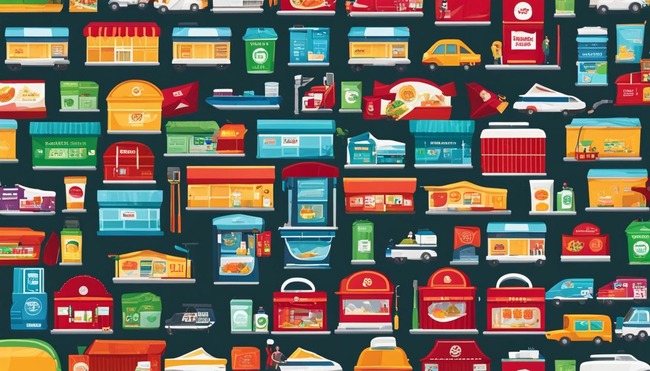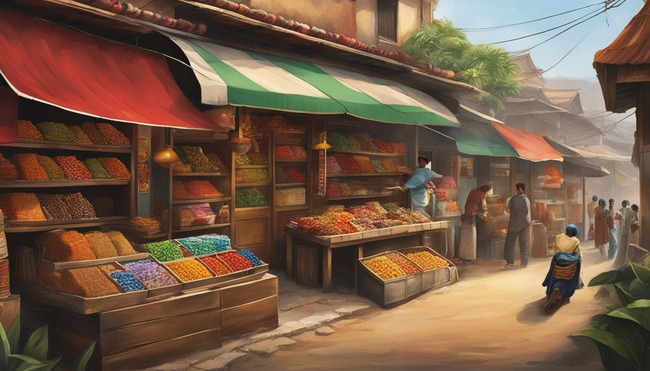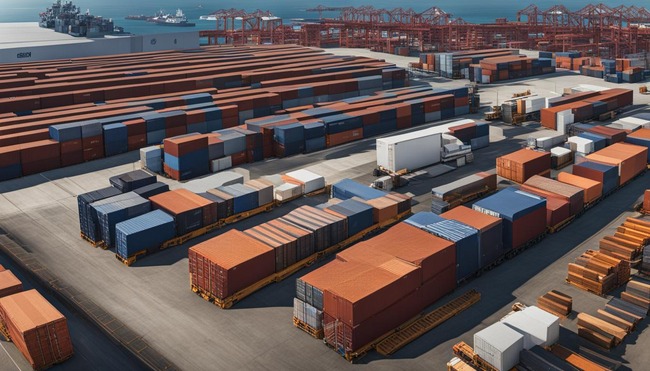Trade channels play a significant role in the distribution of goods and services. In the Philippines, traditional trade channels known as “general trade” have been prevalent for years. However, with the growth of the economy and changing consumer preferences, a new trade channel known as “modern trade” has emerged.
General trade typically involves distributors supplying products to small neighborhood stores known as sari-sari stores. On the other hand, modern trade refers to supermarkets and hypermarkets. While both channels aim to provide products to consumers, they differ in several aspects.
Understanding the dynamics of both trade channels is essential for businesses to make informed decisions, streamline their operations, and ultimately maximize their potentials. In this article, we will explore the differences between general trade and modern trade, the challenges and opportunities associated with both channels and practical tips for businesses to enhance their operations.

Key Takeaways:
- The Philippines has two main trade channels known as general trade and modern trade
- General trade involves distributors supplying products to sari-sari stores while modern trade refers to supermarkets and hypermarkets
- Understanding both channels is crucial for businesses to make informed decisions and maximize their potentials
- This article will explore the differences, challenges, and opportunities associated with both channels
- Practical tips for businesses to enhance their operations will be provided
Understanding General Trade
In the Philippines, distributors play a significant role in catering to sari-sari stores, the backbone of general trade. These stores are small neighborhood shops that offer essential items such as snacks, household products, and personal care items to local communities.
The supply chain in general trade is relatively simple compared to modern trade. Distributors procure products directly from manufacturers and sell them to sari-sari stores. This supply chain is characterized by a large number of intermediaries, resulting in a longer delivery timeline.
| Key features of general trade | General Trade vs Modern Trade |
|---|---|
| Product range includes essential items necessary for daily life such as snacks, household products, and personal care items | General trade offers a limited range of products compared to modern trade |
| Distributors are the key players in the supply chain, offering a wide reach to sari-sari stores in the remote areas | Modern trade relies on retail chains to reach customers. General trade has a wider reach as it caters to sari-sari stores in remote areas as well |
| Sari-sari stores offer convenience to customers due to their proximity and availability of products at affordable prices | Sari-sari stores operate at a lower margin compared to modern trade retail chains |
In general trade, it is important to offer a product range that caters to the specific needs of sari-sari stores. The product range offered by general trade is limited compared to modern trade, but it is carefully curated to reflect the preferences of the target customers.
One of the biggest advantages of general trade is the reach of distributors into remote areas, making essential products available to customers who may not have access to modern trade retail chains. The reliance on distributors, however, comes with its own set of challenges that we will discuss in the next section.

Unraveling Modern Trade
Modern trade has become increasingly prevalent in recent years, with the rise of supermarkets and hypermarkets dominating the retail landscape. These retail outlets offer a wide range of products, including fast-moving consumer goods (FMCG), which is where modern trade holds a competitive edge over traditional general trade.
In contrast to general trade, modern trade outlets are typically larger in size, have a higher footfall, and offer a more structured and sophisticated shopping experience. This makes modern trade a popular choice for consumers who value convenience, variety, and quality.
One significant advantage of modern trade is the ability to cater to specific consumer segments. For example, some supermarkets and hypermarkets may focus on health-conscious individuals, stocking organic and healthy products. Other modern trade outlets may focus on luxury goods and cater to high-end consumers. This specialization gives modern trade an advantage over general trade in terms of customer loyalty and generating revenue.
| Supermarkets | Hypermarkets | |
|---|---|---|
| Size | Medium | Large |
| Product Range | Wide | Wider |
| Footfall | High | Higher |
The table above showcases the key differences between supermarkets and hypermarkets, both of which are examples of modern trade outlets. The larger size of hypermarkets allows them to offer an even wider range of products, making them a popular destination for consumers looking to do all their shopping in one go.
Despite modern trade’s many advantages, it is essential to note that it does have some limitations. For example, modern trade outlets are typically located in urban areas or densely populated regions, making it challenging for rural consumers to access these retail outlets. Additionally, modern trade can be more expensive than general trade due to higher operating costs, which may make it less accessible to price-sensitive consumers.
Overall, modern trade offers a unique shopping experience and holds significant potential for distributors in the FMCG market. While there are some challenges associated with modern trade, optimizing sales channels and focusing on effective marketing strategies can help distributors to maximize their potential in both general trade and modern trade.
Streamlining Business Processes
For distributors operating in both general trade stores and modern trade, it is essential to implement a streamlined business process to maximize efficiency. This section explores a few practical steps that distributors can take to streamline their operations and achieve better results.
Inventory Management
One of the primary challenges that distributors face is managing their inventory across multiple channels. It is essential to have a clear view of inventory levels and lead times to avoid stockouts and optimize sales. An efficient inventory management system can help distributors maintain the right level of stock and improve forecasting accuracy.
Sales Channels and Distribution Network
Distributors must optimize their sales channels and distribution network to ensure maximum reach and more significant returns. A suitable distribution network is the backbone of any successful distributor, and having a reliable system in place can help improve sales and build long-term relationships with customers.
It is also crucial to understand the differences between general trade stores and modern trade outlets and tailor distribution strategies accordingly. For example, general trade stores typically stock a broad range of goods, while modern trade outlets focus more on specific brands and SKUs. Distributors must also consider factors such as pricing, packaging, and promotions when targeting these different channels.
Table: Comparison of General Trade and Modern Trade Sales Channels
| General Trade | Modern Trade |
|---|---|
| Small retail outlets, including sari-sari stores and independent grocers | Large retail chains, including supermarkets and hypermarkets |
| Offers a broad range of products from multiple brands | Focuses on specific brands and SKUs |
| Typically caters to a lower-income target market | Caters to a more diverse and structured consumer base |
Strategic Partnerships
Distributors can explore strategic partnerships to enhance their competitiveness and reach. Collaborating with logistics providers, e-commerce platforms, and other distributors can provide access to new markets and help optimize supply chain efficiency. For example, partnering with an e-commerce platform can help distributors reach a broader customer base and improve delivery times and convenience.
Enhancing Efficiency in Trade Operations
Efficiency is key in the competitive world of trade. To optimize business operations, distributors must focus on several key areas. These include:
- Route-to-market optimization
- Logistics solutions
- E-commerce
- On-time delivery
- Retail business
By investing time and resources into these areas, distributors can work towards streamlining their operations and ensuring that they are meeting the needs of their customers.
Route-to-Market Optimization
Route-to-market optimization involves developing a sales strategy that ensures products reach the end consumer in the most effective way possible. This requires careful planning and analysis of factors such as market demand, transportation costs, and customer location. By optimizing their route-to-market, distributors can reduce costs and improve overall efficiency.
Logistics Solutions
Efficient logistics are essential for distributors to meet customer demand and ensure on-time delivery. This can involve leveraging technology solutions such as transport management systems and warehouse management systems to optimize inventory management and reduce transportation costs. By partnering with logistics providers with a strong track record, distributors can ensure reliable and efficient delivery of products to their customers.
E-commerce
The rise of e-commerce has revolutionized the way consumers shop. To remain competitive, distributors must have a strong online presence and make it easy for customers to purchase products through their website. This can include offering a variety of payment methods and providing a seamless checkout experience. Distributors should also focus on digital marketing strategies to increase visibility and drive traffic to their online stores.

On-Time Delivery
On-time delivery is crucial in the fast-paced world of trade. Late deliveries can result in lost sales and damage to the distributor’s reputation. To ensure on-time delivery, distributors must have robust inventory management systems in place, work closely with logistics providers, and have contingency plans for unexpected delays.
Retail Business
The retail business is constantly evolving, and distributors must stay up-to-date with the latest trends and consumer preferences. They must be flexible in their approach and willing to adapt to changes in the market. This includes staying on top of emerging technologies and investing in the latest retail solutions.
“Efficient logistics are essential for distributors to meet customer demand and ensure on-time delivery.”
By focusing on these key areas, distributors can enhance their efficiency and remain competitive in the fast-moving world of trade. Whether it’s optimizing their route-to-market, leveraging technology solutions, or adapting to changes in the retail landscape, there are many opportunities to improve efficiency and drive business success.
Maximizing Potential in Both Channels
General trade and modern trade cater to different target markets, but they both offer unique opportunities for distributors to maximize their potential. Here are some tips to help you make the most of both channels:
Big brands matter
One of the advantages of modern trade is its ability to attract big brands that appeal to a wide consumer base. However, this doesn’t mean that general trade can’t offer similar opportunities. Distributors who sell a variety of high-quality products can still attract big brands in the general trade channel.
Understand your target market
Knowing your target market is crucial for success in both general trade and modern trade. General trade tends to appeal to lower-income consumers who are price-sensitive and prefer to shop at small retailers such as sari-sari stores. Modern trade, on the other hand, tends to attract middle- and upper-income consumers who are willing to pay more for a premium shopping experience.
Diversify your product range
Offering a variety of products can also help you succeed in both channels. In general trade, customers are often looking for basic household items such as toiletries and snacks, while modern trade customers tend to be interested in a wider range of products such as organic foods and imported goods.
Craft effective marketing strategies
Marketing strategies should be tailored to each trade channel, as the target markets and shopping behaviors differ. In general trade, simple and direct marketing tactics such as sales promotions and product demos work well. In modern trade, a more sophisticated marketing approach that emphasizes a premium shopping experience is more effective.
Stay up to date with modern trade trends
Modern trade is constantly evolving, with new retail formats and shopping behaviors emerging all the time. As a distributor, it’s important to stay up to date with these trends to make informed decisions about where to invest your resources.
“By understanding the unique features of both general trade and modern trade, distributors can maximize their potential in both channels, appealing to a diverse range of customers and offering a variety of high-quality products.”
Conclusion
In conclusion, understanding the dynamics of both general trade and modern trade is essential in making informed business decisions. Modern trade is structured and sophisticated, catering to a diverse consumer base with specific needs and preferences. However, local retailers in general trade still play a vital role in catering to the end consumer in many regions.
Effective marketing strategies are crucial in maximizing potential in both channels. Retail chains in modern trade offer unique advantages, like a wide variety of products and on-time delivery. Local retailers need to focus on optimizing their inventory management and offering a broad range of products to stay competitive.
As the market evolves, the role of e-commerce and logistics solutions is becoming increasingly important in both general trade and modern trade. By enhancing efficiency in trade operations, distributors can maximize their potential in both channels.
Overall, a robust distribution network and optimized route-to-market are critical for all distributors, regardless of the trade channel. By adopting the right strategies and staying up-to-date with the latest trends, distributors can thrive in today’s dynamic trade landscape.
